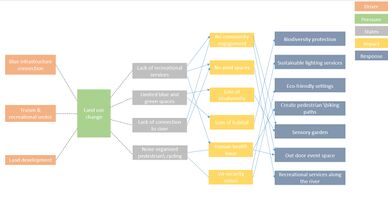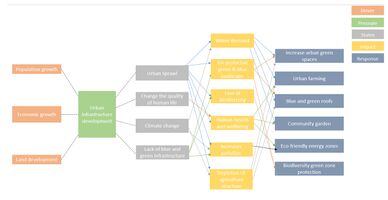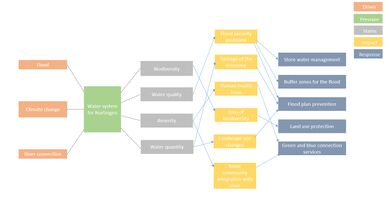WAVE Team 3 Nuertingen 2021: Difference between revisions
| Line 186: | Line 186: | ||
* ''150 words text contribution'' | * ''150 words text contribution'' | ||
<gallery caption=" " widths="500px" heights="200px" perrow="5"> | <gallery caption=" " widths="500px" heights="200px" perrow="5"> | ||
File:Community_involvment.jpg|''Goals'' | |||
File:FINAL_POSSIBLE_FUTURE .jpg|''Goals'' | File:FINAL_POSSIBLE_FUTURE .jpg|''Goals'' | ||
</gallery> | </gallery> | ||
Revision as of 16:43, 15 June 2021
>>>back to working groups overview
| Area | Baden-Württemberg | |
| Place | Nürtingen' | |
| Country | Germany | |
| Topics | WAVE Project | |
| Author(s) | Ali ALBANNA, Arbil Nasr ALKUBATI, Ahmed ESSOUNNI, Moussa OUARHIM, Shabnaz TABASSUM | |

| ||
Rationale
In the beginning, it's very important to understand the Neckar as a water landscape and its surroundings. How is the state of the river now and how it was before? Did it improve or not by time? How many locals and foreigners are living there? Which opportunities for interaction are there? Is it sufficient? How and where we can make interventions along the Neckar and its attributes in Nürtingen? The area we choose has a lot of potentials. It has an amazing location close to the city center and is located next to a river. Yet those spaces are barely used because they are either hard to access and the different social groups are rather socially isolated from each other. We see the challenge in connecting the different groups and residents to the river. The challenge is to bring them together in a landscape that allows people to interact with each other and with the landscape itself, improve and increase seating places along the river, enhance the river embankment since it is not well developed. Also as a challenge for the Neckar river ecosystem in Nürtingen as an example we trying to reduce the flood danger in this area especially near the city center that suffered many times from the flood. Many villages on the Neckar have had to contend with floods, extreme weather conditions, and heavy rain events in recent years. Nürtingen was affected by flooding in 1978 and 2013. It was particularly devastating in 1978 for the old town and the district of Zizishausen.
Location and scope
You can edit this map with the map editor
Water as a natural system
Geomorphology, typologies and dynamics of water areas
- Describe the water areas of your area in the contxt of the wider water system
In Germany, the Neckar river flows through the southwestern state of Baden-Württemberg, with smaller banks through Hesse. It is 362 kilometers long and 706 meters (2,316 feet) above sea level.It rises in the Black Forest (Schwarzwald) near Schwenningen am Neckar, near the Danube River's headwaters.It flows through Nürtingen before discharging an average of 145 m3/s of water into the Rhine at Mannheim, where it is 95 m (312 ft) above sea level.
- How does water appear in the landscape of your living lab? What types of water areas are common?
The main attraction for our living lab is the Neckar river. Since Nürtingen is located on the Neckar River, the main goal of our lab is to connect the Neckar River with the people.The Neckars River flows from the edge of the Swabian Jura (Schwäbische Alb) to Tübingen, Nürtingen, and a few other small towns.Aside from the Neckar, other rivers include the Tiefenbnach Steinach, Aich, Marbach, and Aischenbach.They are Neckar river branches.The most common water sources in our living lab are flowing water such as rivers, tributaries, and standing water such as lakes.
- Please identify the water bodies' catchment areas, tributaries and floodplains
Nürtingen's main river is the Neckar river.Aside from the Necakar river and its tributaries, there are four lakes: Oberer Fischersee, Unterer Fischersee, Beutwangsee, and Tiefen-loch-see in Nürtingen.The catchment area or river basin of Necakr is 13,928 km2. Flood is the most frequently discussed topic in our living lab. Since Nürtingen is located near the Neckar river, some areas are prone to flooding. Some residential, commercial, and industrial settlements can be observed in floodplain areas. The municipality of Nürtingen has some flood management schemes in place, such as flood protection zones and dams to drain water.Aside from that, our primary concern is how to manage the flood and use this threat (food) as an opportunity ( flood water for irrigation).
- Which dynamics do these water areas have?
Black Forest Mountains and Swabian Albs have the direct natural influence to the river’s flow according to difference of the height level. This is also explaining the floods in the area due to the water speed in heavy rains periods. Also as an artificial and man-made influencing the dynamics of the water area there are the urbanization and settlements in the floodplain areas, building dams and changes in the canal structure itself.
- Have there been any flood events in the past?
In Nürtingen, there are four flood events. In the years 1926, 1978, 1990, and 2013. The most severe flood in the Neckar area occurred in October 1824, among others. The estimated return period for an HQ4000 is 4000 years.
- add 2-3 graphical representations to the image gallery, you can add more if you like
Water as a living space
- Which habitats can be found in and along the water areas of your area?
Orchards and trees along the Neckar, wetlands, natural lakes, natural vegetation, farmlands, water species, birds, ducks, and bats are the most habitats in and along the river legally protected biotopes.
- How is the water quality in your water areas?
The quality of water varies according to location, time, weather, and the presence of pollution sources. Generally, the Neckar's water quality is deplorable these days according to the mercury, oxygen, nitrogen, pH levels.
- Which areas are still natural, which are urbanised/artificial?
As shown in the map, we can see how dramatically Neckar river changed in too many places and lost a lot of his natural structure through the years. At the city center area, Tiefenbach and Steinach rivers are totally changed as an example. We can clearly notice that the river stays natural as long as we get away from the town itself which is generally show human interventions on river.
- Are the rivers permeable for fish or blocked by artificial elements?(approx 200 signs)
The Dikes and walls, which were established along the river as a result of the "Special Flood Protection Programme", do not protect the city up to an HQ100, as originally thought. As a result, natural flooding is nearly impossible, also those walls and dikes blocked fish movement and migration as well behind it because normally it’s dangerous for fish to go through them. However our part of the river is permeable for fish at this moment in spite of the artificial elements along the river.
Blue and Green Infrastructure
- What are the major potential elements of a green/blue infrastructure network? Are these likely to change/disappear? Why is that?
The Neckar is difficult to access in many places, especially in the heavily populated and industrially used core area between Stuttgart and Plochingen. Due to human activities over time in Nürtingen such as urbanization, population growth and the settlements increasing, the green and water infrastructure have face many changes. Also there is another various factors like the global warming and climate change. In the end, the green and the blue infrastructure have to be well connected to each other to enhance the quality of life for locals and foreign.
Water as a cultural space
Land use and water
- Some ecosystem services we found along the river are: Regulation services: Water, soil and air quality; Soil Erosion; Lake protection; Natural regulation...etc. Cultural services: Green recreations; Natural heritage; Flora and fauna...etc. Provisioning services: Water drinking; Water for other uses; Food; Energy production...etc. Supporting services: Life cycle; Biodiversity...etc.
- One of the potentials we could have from the Neckar river is: energy production. Nürtingen has 2 hydroelectric power plants in the Neckar river that have a limited potential of growth and they could produce 5850,79 MWh / year and one control structure that could produce 53,06 MWh / year. This limited potential of growth is mainly because of the settlements surrounding the power plants
- map the land uses along your water areas: settlements, infrastructure, agriculture, resource extraction, natural areas, energy production...
- describe in particular the historical evolution of land use pattern, please make use of historical maps
It is clear to observe the enormous transformation of the Nurtingen city landscape through the years such as the large growth of the settlements construction including floodplain’s areas, also the changes made to the rivers canal that tightened it in so many places.
- description evolution, status quo and driving forces, is the land use likely to change? Why is that? (approx 200 signs)
- add 1-2 graphical representations to the image gallery, you can add more if you like
Cultural and spatial typologies of water areas
- Which spatial patterns have evolved in relation to your water areas?
- What is the role of water areas within the overall urban morphology? (approx 200 signs)
- add 1-2 graphical representations to the image gallery, you can add more if you like
- Yourcase water space3.jpg
add a caption
Sacred spaces and heritage
- Which places/elements hold cultural value and to whom?
- You may add a map and some images, please also explain in your caption why these elements are valuable
Visual appearance and landscape narrative
- Which elements are essential for the landscape character?
The city lays on multiples hills, and the old Nurtingen city was settled in the middle of the hills to get benefits from the river, after wile the settlements were expanding to the forest area and had had land use changes
- Has the landscape been painted or otherwise depicted, when and whom? Which elements are essential?
Famous cartographer, Andreas Kieser, painted and mad several maps of the city of Nürtingen from the forest near the river Neckar. There are also postcards which shows landscape of Nurtingen
- Which narratives exist? Who has written about this landscape or depicted it in some way?
- You can add text and images
Water and People
Accessibility and usability
The water area is one of the most popular attractions in Nürtingen. There are several lakes in addition to the Neckar River and its tributaries, the Steinach and the Tiefenbach. Sitting places, walking paths along the river, and hiking trails all attract and connect people to the water. Because of its proximity to the roads, the Neckar river is quite visible to the public. However, because of the scarcity of nearby amenities, Steinach is virtually unnoticed by the general public. The area around Steinach has become more industrialized. As a result, people enjoy the natural spaces near Neckar. The community (residential, commercial, industrial) who lives near the water areas are the direct users of the spaces. Besides this, there are hiking facilities, some sports centers and also cycling paths. Besides that there is rudderclub, so people who love rowing enjoy the summer with the boats.
Community Mapping
What is to be mapped here? Our community consists of many people and organizations their main concern is how can they benefit from their landscape, and how can it enhance their quality of life.
- Locals: They are the primary beneficiaries of the area and the major influencers in the area they consist of: Kids , Elders, Students, Working Class and Youth. They exist eveywhere in our landscape but powerless in comparison to other members. We could: Ask them for feedbacks; Arrange some meetings with them; Try and connect them to the landscape so that we could get feedbacks from them; Try and build a non physical connection with them; Ask for professional input in the project.
- Buisness owners: They are important in the landscape because they hold huge benefit from the area and they are the one offering their services to the locals. They consist of: Small buisnesses, Shop owners, Beer Garden, Coffee houses , Clubs. Their power is linked to their business so when designing we shouldn't affect their business badly. They are located only in their business areas which means they are spreaded accross the city and they are close to the river but in multiple small areas distributions. We could: Ask them for feedbacks; Arrange some meetings with them; See how can we make them benificiate from the landscape for their businesses; Trying and build non physical connection with them; Ask them for future collaboration and if needed some financing.
- Municipality and state: They are the controlers of the area, the law gives them power to do so and they are the most powerful influencers in the area. They consist of: Municipality, State and representatives. Their power is absolut because they hold the control over the city but we shouldn't forget that their role is to help the community have a better life. They are the less distributed actors in the city, their number isn't great but their power on the other hands isn't limited on an area. We could: Ask them for feedbacks; Arrange some meetings with them; See what are their vision for the water landscape in Nürtingen; Trying and build non physical connection with them; Ask them for futur collaboration and if needed some financing.
- NGOs: They are the helpers, they help people get a better look at their problems and how they solve them. They consist of: Urban Gardens, Charity works, Associations. Their power is beset to help others and motivate them to change. So in this, their power reigns. They are distibuted in small areas separately but their power less than that of Business owners. We can see them all accross the city. We could also: Ask them for feedbacks;Arrange some meetings with them; See how we can facilitate their work by enhancing the landscape; Trying and build non physical connection with them; Ask them for futur collaboration; We could also adopt their vision.
Possible Futures
- The area we are studying holds a lot of challenges concerning our blue infrastructure. This is the main reason why we have created these case scenarios that forcasts our analysis on the spatio-temporal scale. The good case scenario presents our vision for the area which is a healthy connection betweed the river and the community by: Increasing green spaces near the river; Creating new lakes to enhance the biodiversity condition; Link different existing areas near the river together which will allow people to spread all over the city. Our solutions holds values:
- Social: Sustainable livelihoods, social cohesion
- Environmental: Climate change adaptation, water and soil protection, green and blue enhancement.
- Economic: Flood risk prevention.
Those could be linked to different social development goals: 3. Good health and wellbeing; 9. Innovation and infrastructure; 12. Responsible consumption; 13. Climate action; 15. Life on land; 17. Partnerships for the goals. So to make that concrete we are going with different concepts: The first will be the enhancement of connection by creating green and blue belt and the second is creating the artificial lakes that will reduce the flood in settlement area and will create more recreational areas in zones and enhacing the biodiversity.
Collaborative Goal Setting
- Define strategic planning objectives based on the evaluation findings from your analysis
- Ideally, involve the community of your living labs into this process
- Link back to your original targets from section one and the Development Goals
- 150 words text contribution
Spatial Strategy and Transect
- translate your strategic goals into a vision
- develop a spatial translation of your vision
- exemplify your vision in the form of a transect with concrete interventions
- add map(s) and visualizations
Process Reflection
- Reflect in your intercultural and interdisciplinary team on the outcomes of your study
- Which limitations were you facing?
- What have you learnt from each other?
- What did you learn in the Living Labs?
- What would you do differently next time?
- You can also use diagrams/visuals
- 250 words text
References
- https://de.nailizakon.com/n/01-bw/nurtingen/nurtingen.html
- https://www.hochwasserschutz-nuertingen.de/de/naturschutz-umwelt/das-untersuchungsgebiet
- https://de.wikipedia.org/wiki/N%C3%BCrtingen
- https://en.wikipedia.org/wiki/Neckar
- http://www.fgg-rhein.de/servlet/is/4263/
- https://udo.lubw.baden-wuerttemberg.de/public/
- https://www.test-wasser.de/neckar-wasserqualitaet



































